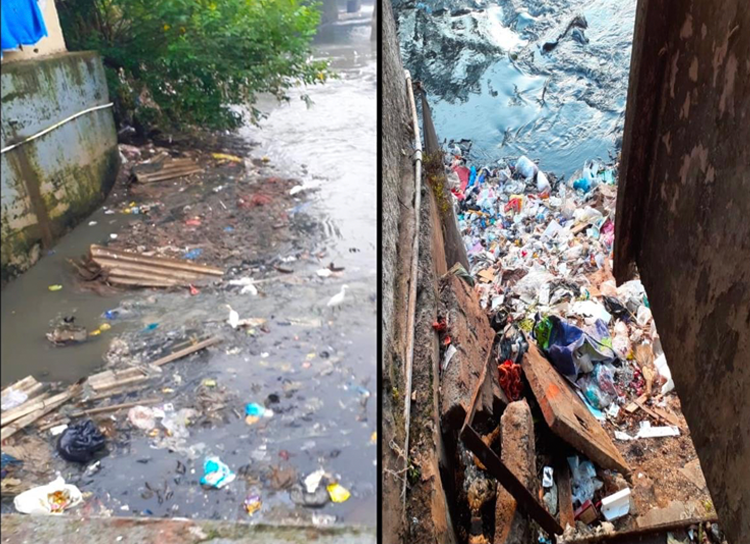Youth Fellows: Kiran Kakade, Prasanna Shikhare, Shweta Dicholkar, Prachiti Parab, Aman Verma, Rutuja Joshi, Jasleen Kaur, Aarti Nandrekar, Suraj Rankhambe
| Methodology | ||
| Type of tool | Number | Social description about the research participants (age group, gender, etc.) |
| Survey | 100 | Random sampling, representing a mix of age groups and sexes |
| Interviews | 2 | Practitioners in the field of rivers |
Why did the group choose this topic?
The researchers wanted to understand why the Poisar river is severely polluted, how community members interact with the river and the effectiveness of policies and plans introduced by the government and NGOs.
Summarise 3-5 key findings
- Causes: The pollution in the river was caused primarily due to dense urbanisation, construction, and industrial activity. 41% of respondents felt the pollution started by the year 1990. That was the same year that liberalisation took place at the national level in India, boosting urbanisation, consumerism and privatisation.
- Flooding: the area beside the river is low-lying and flood-prone. Several respondents shared facing floods over two-three times every monsoon. They have also spotted snakes from the river during the floods. 16% repeatedly emphasised that flooding in the monsoon season was a significant problem along with rising water levels.
- Public participation: 90% said they do not use the river, and 87% said they had not participated in any initiatives to clean the river. This data does not mean that they are numb to the river. Eighteen respondents said that they felt sad seeing its deteriorating condition. Many said that watching the once clean river becoming polluted drastically was disheartening to them. Twenty-three respondents expressed concerns over the river’s increasing pollution and filth.
- Accountability: 65 respondents said that the people living close to the river are responsible for its present state. Fifty-three respondents said pollution from small and large-scale industries has led to its current state. Only 35 people held the government responsible.
- Garbage: When asked where they throw their garbage, 79% said they give it to operators of garbage vans, and 10% said they throw it in the river. Municipal vans do not go inside lanes due to their narrow width. There is a scarcity of public dustbins
- Bathrooms: drainage pipes of public washrooms were often left open, and the sewage flowed directly into the river at several points of the river. Many toilets had broken doors and walls.
- Health: participants felt the river negatively impacted their health in multiple ways. Twenty-two respondents mentioned that they were affected by mosquito-borne illnesses. Seventeen respondents noted that the foul smell of the river caused feelings of nausea. Sixteen respondents cited conditions such as cold, cough and fever. Other respondents shared answers such as breathing problems, narrating the death of a child due to a disease they felt was caused by the river and the death of pigs and other animals due to the toxicity in the river water.
Action/advocacy work
The advocacy phase started when an unprecedented COVID-19-induced lockdown was in force. The group created Facebook and Instagram pages to share their findings with Mumbaikars. They wrote blog posts and ran hashtag campaigns on Twitter.
Recommendations
- Implement prior recommendations by reports such as the Fact Finding Committee on Mumbai Floods (2006), River Regulation Zone Policy and more.
- River restoration and rejuvenation: authorities should relocate habitations that are 50 m on either side of the banks. Growing grass and shrubs will enhance drainage.
- Education: add information about rivers in school curriculums and through the media.
- Art and culture in public spaces to raise awareness about the importance of rivers
- Address needs of the community: livelihoods should be generated
- Tribal communities residing by the river must be included in the decision-making process, and their right to land should be recognised
- River helpline: to improve coordination between the community and the government. Residents can use the helpline to voice their opinions and file complaints about any harmful activities related to garbage dumping, concretization-related activities and more.
Locality name
Kandivali, Mumbai
